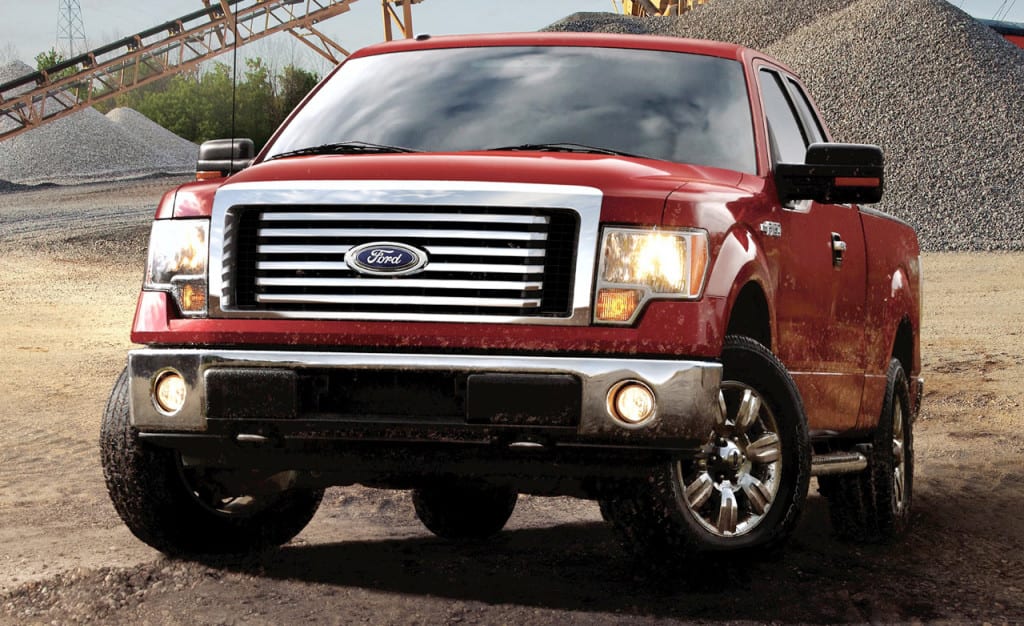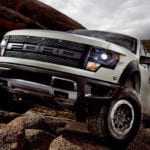You will find the EcoBoost engines unique to Ford in a lot of their vehicles. Cars and trucks alike from Ford dealers s parked proudly boast these engines. The EcoBoost engines are considered to be one of Ford’s greatest advancements in the auto industry, and have captured the interest of many consumers over the years. The EcoBoost engine got its start by being paired with Ford’s F-150 truck in 2011, and has since then become a huge success.
This engine also marked the first time a major auto company utilized a turbocharged engine in such a strategic, and highly effective way.
A Brief History
The EcoBoost technology was Ford’s answer to the problem of rising gas prices and the CAFE laws dictating that automakers need to produce greater fuel efficiency every year. They decided to draw on “Direct Fuel Injection” which was invented by Jonas Hesselman in 1925. Ford refined his invention and combined it with their own technology, giving us the EcoBoost engine which combines power, fuel economy, and reduces harmful emissions.

Doing this was a leap of faith for Ford, praying consumers would catch them instead of letting them fall. Consumers generally don’t like their favorite vehicles being tampered with, and don’t like when changes are made they don’t ask for. But Ford figured no consumer liked driving a car that is all MPG and powered by chipmunks instead of horses.
In 2011 the Ford EcoBoost engine was put into the flagship of Ford’s truck fleet: the F-150. This became the most significant powertrain overhaul of the trucks history. The first engine introduced was a 3.5-liter V6, which was built in Brook Park, Ohio at the Cleveland engine Plant No. 1.
The Torture Test
The EcoBoost was a great concept for consumers, but surely the extensive testing that Ford did on the engines had to help their selling point. Since it was a new system, it needed to be tested and applied to real world expectations and warranty history of previous engines in the F-150s. The EcoBoost validation consisted of 1.5-million hours of computer analysis, 13,000 hours of engine dyno testing; 5,000 of those hours being at max power and 2,500 at 5000+ RPMs. 100,000 hours of vehicle testing was also logged by tests that pushed these engines harder than any customer could ever push them.
With the assurance of quality, the leap of faith Ford took paid off. Consumers flocked to the new engine that officially combined power and fuel efficiency. By the end of the first year introducing EcoBoost technology, they had produced over 128,000 vehicles equipped with EcoBoost engines. By 2012, they had nine EcoBoost models available, and 2014 marked the year 90% of Ford vehicles would have EcoBoost engines.
EcoBoost engines are still going strong in 2015, and should be in 2016 as well.
What Are They?
For simplicity’s sake, an EcoBoost engine is a combination of turbocharging, direct fuel injection, and variable valve timing. In turn, this combination improves fuel economy and reduces C02 emissions without sacrificing power.
The Eco
The Eco mainly comes from the fuel injection portion of the engine. More specifically, the direct injection. The overall process of fuel injection being the way fuel is sent into the engine for combustion. A direct injection engine is a variant of this traditional process. Generally, fuel injection uses a step known as the intake tract in order to provide fuel to the engine. Direct injection eliminates this extra step, and allows for a less complicated fuel injection process.
This method of directly injecting fuel into the engine greatly improves fuel efficiency.
The Boost
The turbocharging is where the EcoBoost engines get their “boost,” and rightfully so. The way a turbocharged engine works is a simple but effective concept: the engine uses a device that forces in more air than a traditional engine would. The increase in air ends up generating more fuel, therefore creating more power.
This device that forces the air into the engine is called a turbocharger, the overall process sometimes described as a “boost.” Hence the word “boost” in the EcoBoost name.
The variable valve timing also contributes to the boost, and reduction of Co2 emissions. In a conventional engine, the intake and exhaust valves operate in opposition. This ensures that new fuel will not mix with the exhaust gas, which is expelled from the output port. The exhaust gas contains unburnt fuel, creating a waste of resources and a harmful emission.
This is where variable valve timing comes in. In an engine with VVT, the intake and exhaust valves are adjusted to remain open for a fraction of a second. The overlap this causes will now mix the new fuel with some of the exhaust. Because the exhaust contains that unburnt fuel, the engine will provide greater torque output and create less tailpipe emissions. 15 percent lower CO2 emissions, to be precise.
The turbocharger adds power in a way that doesn’t hurt the gas mileage, contributing to the Eco in the name as well. Which is the key difference between the turbocharged engine and an enlarged engine. Simply enlarging the engine increases power that requires more fuel, thus hurting gas mileage.
Just How Efficient are we Talking?
The 2011 F-150 outfitted with the 3.5-liter V6 saw a significant increase in fuel economy. The 3.5-liter V6 was able to put out 365 horsepower and 420 pound-feet of torque, 90 percent of that torque provided between 1,700 and 5,000 RPMs. This enabled the 2011 F-150 to gain up to 20 percent greater fuel-efficiency than the 2010 model. Quite an impressive leap for a single model year.
The EcoBoost engine was successfully able to add power and increase acceleration, all while being considerate to the gas mileage and production of harmful emissions.
Packing a Bigger Punch
The EcoBoosted F-150 also saw a noticeable increase in horsepower. The 2010 F-150 model with a 5.4-liter 3-Valve V8 FFV engine got 320 horsepower with 390 pound-feet of torque. For 2010, that was the strongest engine Ford offered in their F-150 lineup. The 4.6-liter 2-Valve V8 was the standard powertrain, and offered 248 horsepower with 294 pound-feet of torque. The EcoBoost power combined with the 3.6-liter V6 allowed a smaller engine to trump both of the 2010’s bigger engines in both horsepower and torque.
Combine this with the 15 percent emission reduction, it is no wonder this engine became such a revolutionary and popular engine.
Since the 2011 institution of the EcoBoost engine, Ford has been able to change the face of the automobile industry. Even today, the EcoBoost engines are still going strong and trumping conventional engines in power, fuel economy, and emission reduction. Just last Spring in March, Ford hit a production milestone with the EcoBoost engines. The Ford Focus equipped with its 1.0-liter engine became the 5-millionth EcoBoost equipped vehicle manufactured.
The production of this EcoBoost equipped vehicle also marks the first time customers can choose EcoBoost engines on 100 percent of Ford’s passenger vehicles in the United States. An impressive feat for an automobile company in just 4 years.
Update 6/13/2019
But here we are giving all the credit to our friends at Ford. Sure, it’s well deserved for making this improvement to an already stellar lineup but the history of the EcoBoost engine goes back to more than a decade before it ever hit dealer floors under the hood of an F-150.
Meet the Mazda L-Series
As some of you may know, the EcoBoost engine was originally a derivative of the Mazda LF albeit configured with Ford’s manifold and engine systems. Around the same time that the EcoBoost was launch, the L-Series was discontinued, making way for the next-gen Skyactiv technology that’s still in place at Mazda today (at least at the time of this being written).
Ranging from 1.8-liter to 2.5-liter, the L-Series was an inline four-cylinder engine first introduced in 2001. Feature variable valve timing and a stainless steel intake manifold, later versions of the L (including the 2.0-liter LF and turbocharged L3) would evolve to incorporate direct-injection technology.
That said, just as we can’t give full credit to Ford, we won’t give it to Mazda either. The development of the technology, leading up to a 2001 unveiling, still had Ford’s fingerprints on it; an occurrence which is far from uncommon, with automakers collaborating to develop technologies in a manner that minimizes the financial risk while maximizing the potential for widescale integration.
In the case of Ford’s integration of the Mazda L technology under the EcoBoost name, the entire process has increased Ford’s active portfolio by 128 patents and was estimated to cost more than $5.9 billion. But can you really put a price tag on global-level sustainability improvements, especially the kind that won’t sacrifice performance? We think not.
But how have Ford’s EcoBoost engines progressed since our original article was written almost four years ago? It’s no secret that Ford’s lineup has evolved significantly in recent years, especially in terms of F-Series trucks. So with that in mind, let’s try and flesh out the story a bit.
Outline of Ford EcoBoost Engines
Excuse us for any risk of potential overlap, but to paint the most thorough picture possible of the EcoBoost family, we need to get to know them on a first-name basis. That’s right some of them have names – but combined they all contribute to a near decade-long story.
Back in 2010, the world was introduced to three separate engines. First, the EcoBoost 2.0 (aka the ‘Mazda L’). This 122 cu.in. inline four-cylinder was the engine we mentioned above and was employed through the 2014 model year. At the same time, Ford also produced the EcoBoost 1.6 (aka ‘Ford Sigma’) a 97.4 cu.in. variant and the EcoBoost 3.5 (aka ‘Cyclone’) a 213.3 cu.in. V6. The latter two are still in use today. Still with us? Good.
The 2012 model year would introduce the EcoBoost 1.0 (aka ‘Fox’) a 61 cu.in. turbocharged inline three-cylinder, although it would be 2014 before it was introduced in the United States for use in the Fiesta.
2014 would see the introduction of the 1.5-liter variant of the ‘Ford Sigma’. 2015 would usher in the EcoBoost 2.0-liter Twin Scroll (a 122 cu.in. I4 still in use) the 2.3 variant of the original ‘Mazda L’ engine and the EcoBoost 2.7 (aka ‘Nano’) a 164.4 cu.in. V6.
The family would be capped off (for the time being) by the 2016 introduction of EcoBoost 3.0 (the 181.1 inch variant of the Nano) and EcoBoost 1.5 (aka ‘Dragon’) the 91.4 cu.in. version of the inline three-cylinder.
Across the Ford, Lincoln and even Land Rover lineups, these engines would appear as well as in lesser known brands outside of the U.S. like Zenos and VUHL. And of course they would; this is, after all, a globally integrated engine platform so not all versions are going to be put to use stateside. And while that won’t be as fascinating to all as it is to me, it’s an interesting facet of the EcoBoost family to explore.
What EcoBoost Engines are Available Stateside in 2019?
The 2019 model year heralded in an exciting year of changes, with the 2018 introduction of an all-new turbocharged diesel. But that’s a story for another day. Let’s talk about each of the EcoBoost engines currently available in the U.S., and what kind of numbers you should expect from each. But you know what? Let’s stick to the F-150 for this conversation.
Kicking things off the 2.7-liter EcoBoost Twin-Turbocharged V6 churns out 325 hp and 400 lb-ft of torque. It offers a max towing capacity of 9,000 LBS and 2,470 LBS of payload while offering 26 mpg highway and 20 mpg city.
The 3.5-liter EcoBoost Twin-Turbocharged V6 wrangles 375 hp and 470 lb-ft of torque. In terms of towing, it pumps those numbers up to 13,200 LBS while payload gets driven up to 3,230 LBS. And fuel economy numbers come in around 25 mpg highway and 18 mpg city.
And finally, the High-Output EcoBoost Twin-Turbocharged V6 – best known for its inclusion in the game-changing Raptor – is currently rated for up to 450 hp and 510 lb-ft of torque. Towing numbers come in around 8,000 LBS while payload falls in at 1,200 LBS. Fuel economy is a little more modest at 18/15mpg respectively. And there you have it, the EcoBoost engines currently employed among Ford’s F-Series.
And That Brings Us Current
With sustainable powertrains the subject of many of today’s automotive discussions, be they hybrid, electrified, or based around hydrogen fuel cells, there’s no shortage of developments worth discussing. But let us never forget the efforts made to take combustion engines in a more sustainable direction at a time when these new technologies were still in their infancy. For that reason, the Ford EcoBoost family of engines will inevitably be one of those fascinating footnotes in our collective automotive history.
Is an EcoBoost Powertrain Right for You?
Ultimately, it comes down to the unique demands of your lifestyle and how you use your truck. And since some of the EcoBoost variants sit atop their respective lineups, it will inevitably have something to do with your budget as well. That said, it’s commendable technology which infuses a ride with both smooth power and heightened acceleration without driving those fuel economy numbers down. Bottom-line, there’s a lot of appeal to having a direct-injection turbocharged engine under your hood.








